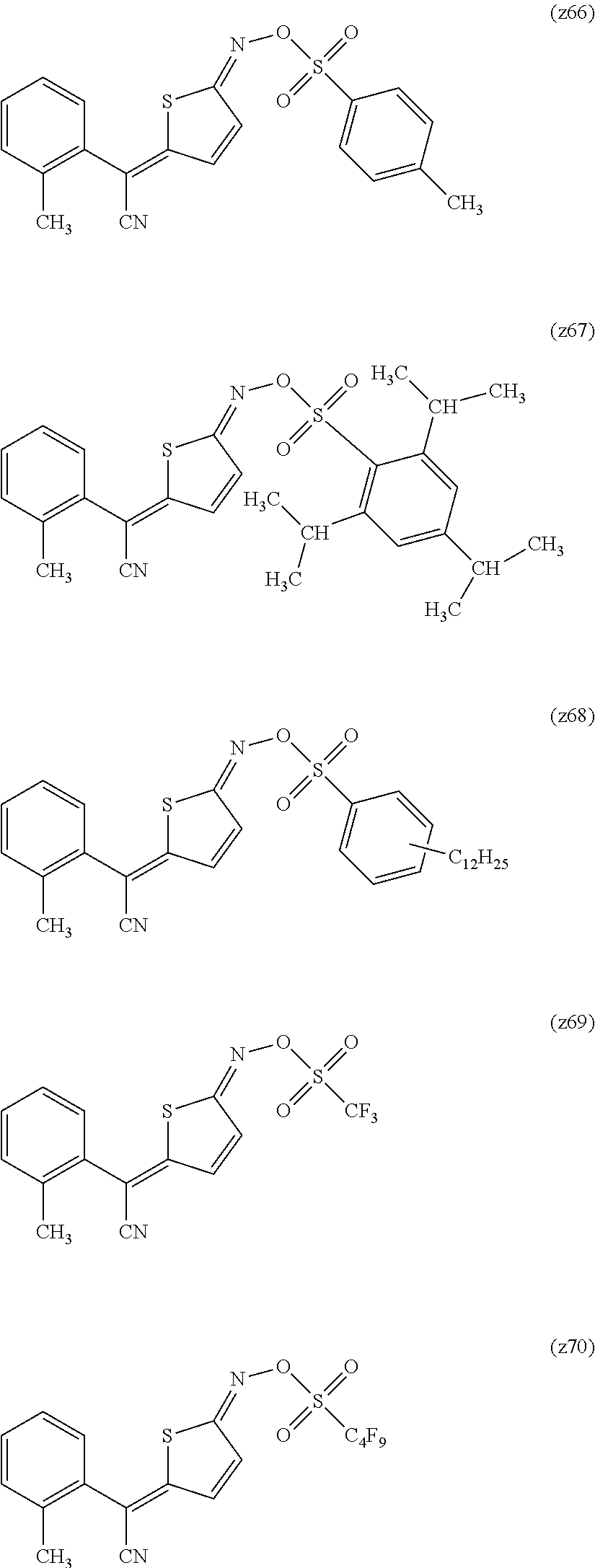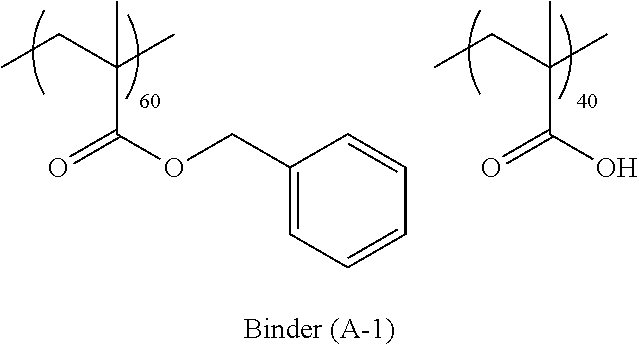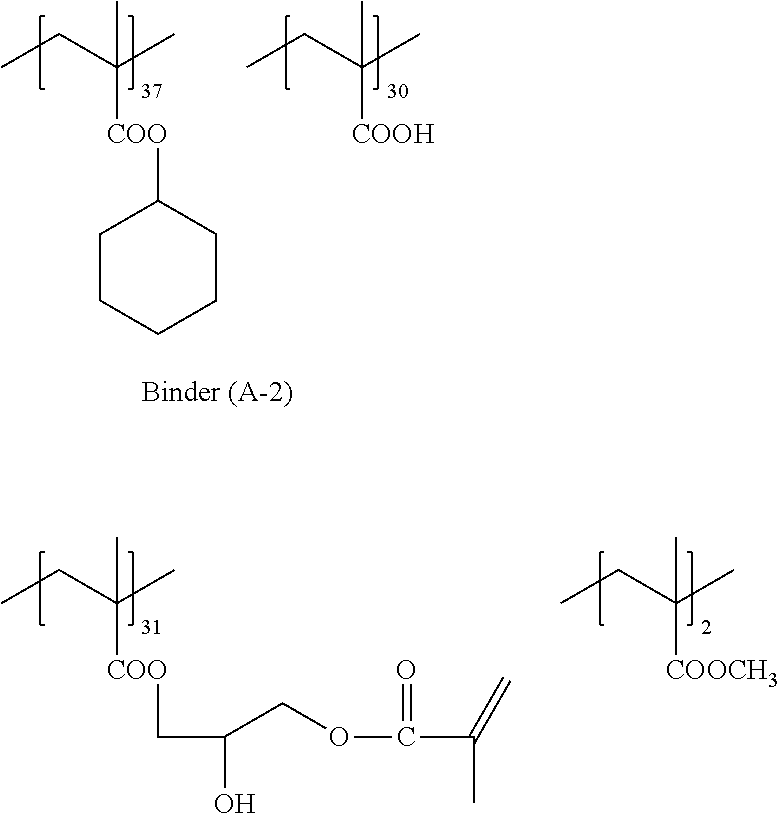Conductive member, production method of the same, touch panel, and solar cell
- Summary
- Abstract
- Description
- Claims
- Application Information
AI Technical Summary
Benefits of technology
Problems solved by technology
Method used
Image
Examples
synthesis example 1
[0367]
[0368]AA (9.64 g) and BzMA (35.36 g) were used as monomer components that form a copolymer, AIBN (0.5 g) was used as a radical polymerization initiator, and AA, BzMA and AIBN were made to cause a polymerization reaction in a solvent PGMEA (55.00 g), thereby obtaining a PGMEA solution (solid content concentration: 45% by mass) of a binder (A-1). Meanwhile, the polymerization temperature was adjusted to a temperature of from 60° C. to 100° C.
[0369]As a result of measuring the molecular weight using gel permeation chromatography (GPC), the weight average molecular weight (Mw) in terms of polystyrene was 11,000, the molecular weight distribution (Mw / Mn) was 1.72, and the acid value was 155 mgKOH / g.
synthesis example 2
[0370]
[0371]MFG (7.48 g, manufactured by NIPPON NYUKAZAI Co., Ltd.) was added in advance to a reaction container, heated to 90° C., and a solution mixture made up of MAA (14.65 g), MMA (0.54 g) and CHMA (17.55 g) as monomer components, AIBN (0.50 g) as a radical polymerization initiator and MFG (55.2 g) was added dropwise to the reaction container in a nitrogen gas atmosphere at 90° C. over 2 hours. After the dropwise addition, the components were reacted for 4 hours, thereby obtaining an acrylic resin solution.
[0372]Next, hydroquinone monomethyl ether (0.15 g) and tetraethylammonium bromide (0.34 g) were added to the obtained acrylic resin solution, and then GMA (12.26 g) were added dropwise over 2 hours. After the dropwise addition, the components were reacted for 4 hours at 90° C. while blowing air into the reaction container, and then PGMEA was added so that the solid content concentration became 45%, thereby obtaining a solution (solid content concentration: 45% by mass) of a b...
preparation example 1
[0374]—The Preparation of a Silver Nanowire Aqueous Dispersion Liquid (1)—
[0375]The following addition liquids A, G and H were prepared in advance.
[0376][Addition Liquid A]
[0377]Silver nitrate powder (0.51 g) was dissolved in pure water (50 mL). After that, 1N ammonia water was added until the solution became transparent. In addition, pure water was added so that the total amount became 100 mL.
[0378][Addition Liquid G]
[0379]Glucose powder (0.5 g) was dissolved in pure water (140 mL), thereby preparing an addition liquid G.
[0380][Addition Liquid H]
[0381]Hexadecyltrimethylammonium bromide (HTAB) powder (0.5 g) was dissolved in pure water (27.5 mL), thereby preparing an addition liquid H.
[0382]Next, a silver nanowire aqueous dispersion liquid was prepared in the following manner.
[0383]Pure water (410 mL) was put into a three-neck flask, and the addition liquid H (82.5 mL) and the addition liquid G (206 mL) were added while being stirred at 20° C. (first step). The addition liquid A (20...
PUM
| Property | Measurement | Unit |
|---|---|---|
| Temperature | aaaaa | aaaaa |
| Length | aaaaa | aaaaa |
| Length | aaaaa | aaaaa |
Abstract
Description
Claims
Application Information
 Login to View More
Login to View More - R&D Engineer
- R&D Manager
- IP Professional
- Industry Leading Data Capabilities
- Powerful AI technology
- Patent DNA Extraction
Browse by: Latest US Patents, China's latest patents, Technical Efficacy Thesaurus, Application Domain, Technology Topic, Popular Technical Reports.
© 2024 PatSnap. All rights reserved.Legal|Privacy policy|Modern Slavery Act Transparency Statement|Sitemap|About US| Contact US: help@patsnap.com










